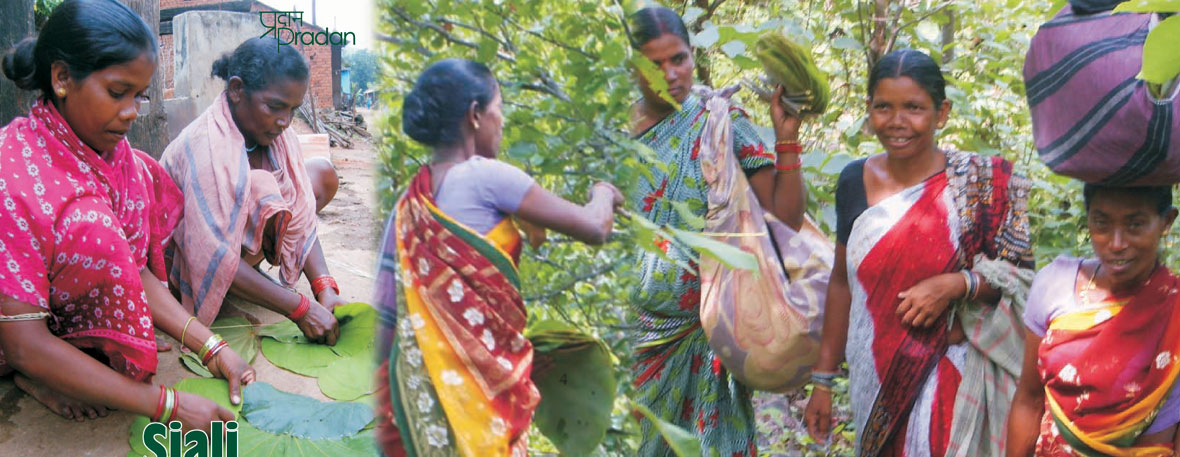A document on the Siali leaf-plate making activity
A document on the Siali leaf-plate making activity

- DateFebruary 13, 2017
Organization: Professional Assistance for Development Action
Designation: Employment Facilitator
Number of Positions: 1
Locations: 1)Coimbatore, Tamil Nadu
PRADAN aims at providing relevant employability skills to young women from its states of operation – Odisha, Bihar, Jharkhand, Chhattisgarh- and help them get linked to appropriate employment opportunities. A major destination of employment is in the four southern states of Telangana, Andhra Pradesh, Karnataka, Tamil Nadu and Delhi NCR Region in potential sectors such as manufacturing, automotive, e-commerce, garments, textiles, hospitality, healthcare and retail industry. PRADAN is looking for a person to liaison with employers and young women who are engaged so that they work in a dignified work environment, able to retain themselves and build a long-term career for themselves. The person would be reporting to Integrator, PRADAN.
Key Deliverables:
QUALIFICATIONS, EXPERIENCE AND COMPETENCIES:
Education
Applicants must have Degree/Post Graduate Degree/ Diploma preferably in Social Sciences, Rural Development/ Management or equivalent, from a reputed institute.
Experience
(1) Minimum 3 to 5 years of experience in rural / urban development / skilling / employability programmes.
(2) Experience of working with employment generation programs is preferable, and not mandatory.
Skills and Competencies:
(1) Good written and oral communication skills in English and functional communication in Hindi and Tamil is preferable
(2) Excellent interpersonal skills
(3) Excellent team skills
(4) Willing to travel
COMPENSATION OFFERED
Compensation offered to the selected candidate shall be commensurate with qualifications, experience, and past salary history.
LOCATION
The job requires the person to be on the go; can operate from Coimbatore but should be willing to visit the employment facilities on a regular basis.
Founded in 1983, PRADAN has been at the forefront of innovations in rural development and has played a significant role in the design and implementation improvement of major rural development programmes. Given the deep deprivation in rural pockets, particularly among tribal and vulnerable groups, we promote sustainable livelihoods, integrated with work on issues of Gender, WASH, Health, Nutrition, Climate Change, Skilling and Governance. We currently work across 8 states, reaching out to 2.8 million households in collaboration with more than 100 NGO partners. PRADAN is an equal opportunity organisation. To learn more, please visit us at: www.pradan.net.
As an Executive (Communications), the incumbent is supposed to be a knowledgeable, self-motivated and passionate individual with a creative bent of mind. The major focus area would be to promote and help flourish the practice of reflective writing and process documentation. The role involves content generation, curation, presentation and publication of articles for internal forums and external agencies including mainstream media. The person will also be responsible for organising training events for the same. Creating and implementing the media strategy to showcase PRADAN’s successes and challenges will be another key aspect of the position.
The qualifying degree is a minimum of 16 years of education (A Master’s degree in English literature, or any other social science stream).
A degree or diploma in Mass Communication from a reputed institute is preferred
Nature of Engagement: Regular position with a probation period of six months.
Remuneration: Based on qualification and experience the CTC would be in the range of INR 8 to 10 lakhs per annum. The CTC includes basic pay and other allowances. Apart from this, provision of deferred benefits such as PF, Gratuity, NPS, Insurance (Term life insurance, hospitalization insurance for self and dependents and accident insurance policy) are provided.
Place of posting: In PRADAN locations (possibly district town or state capital)
Only short-listed candidates will be contacted. Those shortlisted will be invited to a selection process in Noida, tentatively in the first week of September 2024.
PRADAN is an equal opportunity employer. Women candidates are encouraged to apply.
Interested candidates with the relevant background and fulfilling the eligibility criteria are visit our website https://www.pradan.net/join-us/#careers and fill the ‘Application for Executive (Communications)’.Applications close by August 31, 2024.